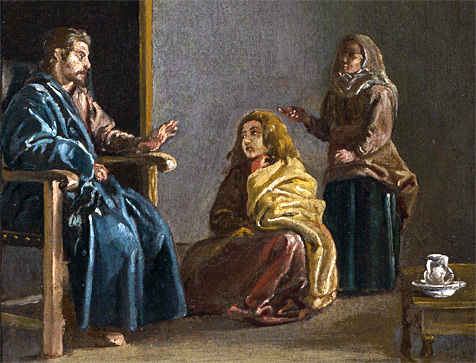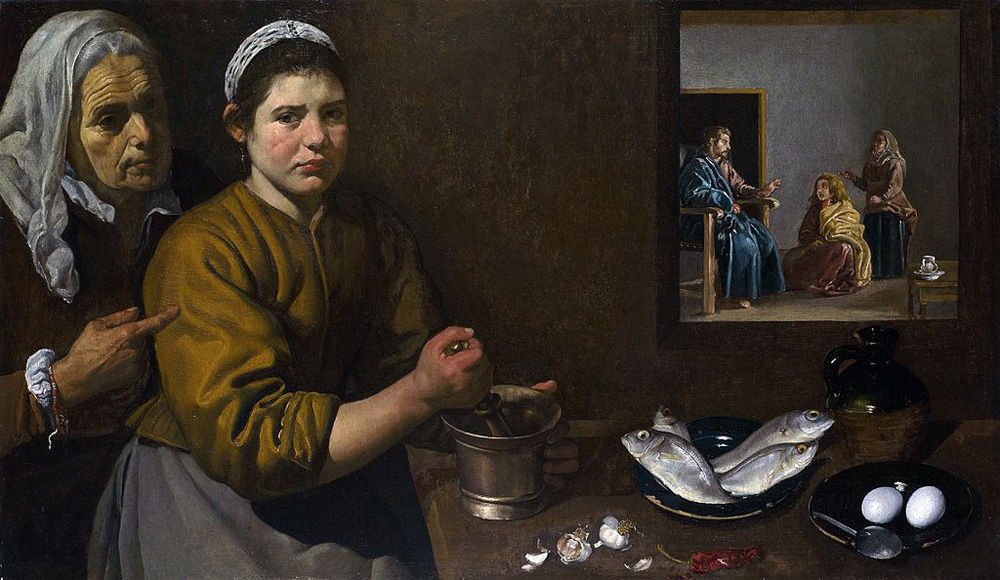 The episode pictured is in Luke 10:38-42. The chief appeal of this painting is in the sense of injury on Martha;s face and the mysterious old woman, unmentioned in the gospel account, with the apparently unwelcome advice.
The episode pictured is in Luke 10:38-42. The chief appeal of this painting is in the sense of injury on Martha;s face and the mysterious old woman, unmentioned in the gospel account, with the apparently unwelcome advice.
In the inset (right) Mary's unkempt blonde hair and loose garments contrast sharply with Martha's tight coif and sensible work clothes. Mary represents the contemplative life, gazing here on Jesus and in later life on the crucifix, while Martha represents the active life. In her legend she will become an eloquent evangelizer in Gaul. This may be the point of the fish and eggs on the table. In Matthew 4:19 Jesus calls his disciples to be "fishers of men," and in Christian art eggs can symbolize both fertility and purity (Sill, 53, 130).
The mortar and pestle also bespeak the active life that Martha will pursue. In their shape they resemble the aspergillum and water pot with which Martha saved the people of Aix from the monster Tarasconus and which became her attribute in portraits.
Read more about images of St. Martha.
Also see St. Mary Magdalene.
